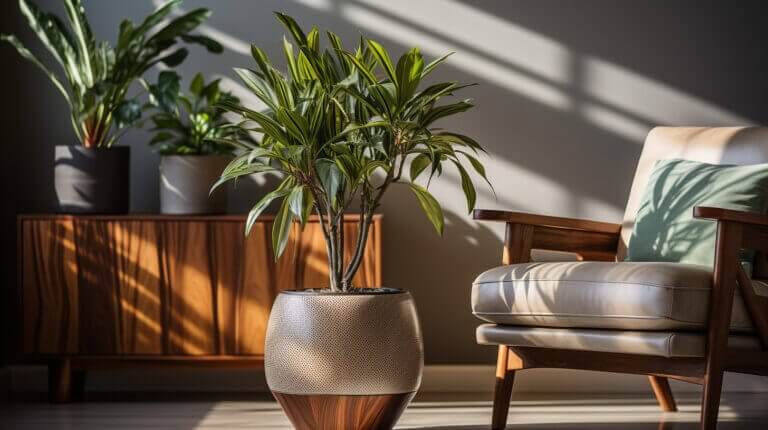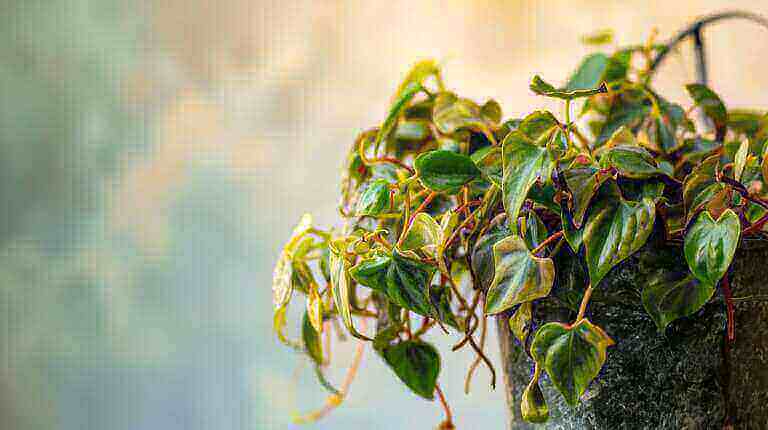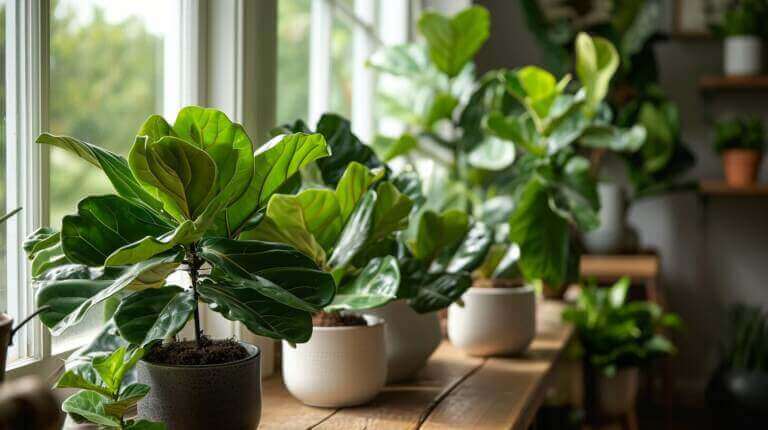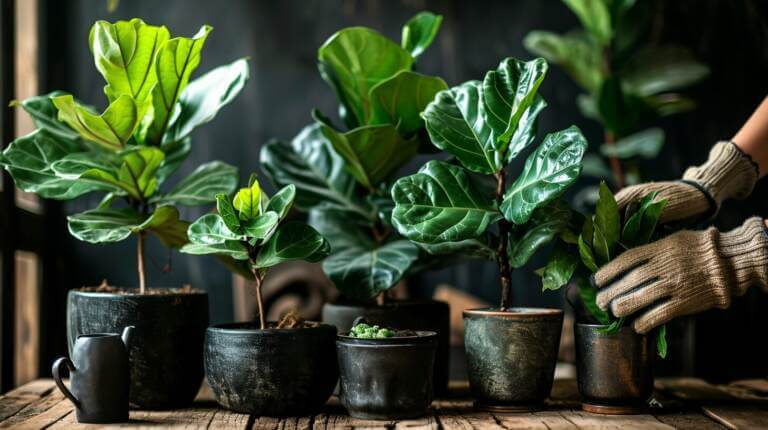Common Pilea Peperomioides Problems: Chinese Money Plant Pests, Diseases, and Troubleshooting
If you notice your Pilea plant leaves curling, drooping, changing color, or developing spots, it may be experiencing common problems like overwatering, nutrient deficiency, or insect infestations. In this section, we will delve into the causes and solutions for these issues, providing effective troubleshooting tips to help you keep your Pilea indoor plant healthy.
Key Takeaways:
- Common problems with Pilea peperomioides include overwatering, nutrient deficiency, and pest infestations.
- Overwatering can be addressed by improving drainage and adjusting watering practices.
- Nutrient deficiency, particularly nitrogen deficiency, can be remedied by using high-nitrogen fertilizers and checking soil pH.
- Light and heat stress can impact the health of Pilea peperomioides, so it is important to provide appropriate lighting conditions and monitor temperature levels.
- Aphids and whiteflies are common pests that can affect Pilea peperomioides, but they can be controlled with insect-killing soap or neem oil.
Overwatering: A Common Pilea Peperomioides Problems
Overwatering is a common problem with Pilea peperomioides, often caused by inadequate drainage or providing too much water. This can lead to root rot and other issues that can harm the overall health of your plant. To ensure your Pilea thrives, it’s important to understand the signs of overwatering and take the necessary steps to prevent and address it.
One of the key factors in preventing overwatering is ensuring that your Pilea has proper drainage. Make sure your pot has adequate drainage holes to allow excess water to escape. Additionally, avoid using containers that are much larger than the plant needs, as this can lead to excess moisture being retained in the soil.
When it comes to watering your Pilea, it’s crucial to strike the right balance. Only water when the top inch of soil is dry to the touch. Use your finger to check the moisture level before watering. If the soil feels damp, hold off on watering until it dries out. Remember, it’s better to underwater than overwater your Pilea. Gradually increase the frequency of watering as your plant recovers from overwatering, allowing it to establish a healthy root system.
Nutrient Deficiency: A Cause of Chinese Money Plant Problems
Nutrient deficiency can be a common problem for Pilea peperomioides, leading to issues such as yellowing leaves and stunted growth. This occurs when the plant does not receive an adequate supply of essential nutrients, particularly nitrogen. Nitrogen is crucial for healthy leaf development and overall plant growth.
To address nutrient deficiency in your Pilea peperomioides, it is important to provide the plant with a high-nitrogen fertilizer. This will help replenish the nitrogen levels in the soil and promote healthy foliage. Additionally, you may consider supplementing with an amino-acid supplement to ensure the plant receives sufficient nitrogen.
It is also worth noting that the soil pH plays a significant role in nutrient absorption. For Pilea peperomioides, the ideal soil pH ranges from 6.0 to 7.0. If the pH levels are too high or too low, it can hinder the plant’s ability to take up essential nutrients, including nitrogen. Therefore, it is essential to regularly monitor and adjust the pH levels of the soil as needed.
Table: Common Symptoms of Nutrient Deficiency in Pilea Peperomioides
| Symptom | Possible Nutrient Deficiency |
|---|---|
| Yellowing leaves | Nitrogen deficiency |
| Pale or whitish leaves | Iron deficiency |
| Dark green leaves with yellow veins | Magnesium deficiency |
| Leaf curling or distortion | Potassium deficiency |
Light and Heat Stress: Impact on Pilea Peperomioides
Pilea peperomioides is a popular houseplant admired for its unique round leaves and easy care requirements. However, like any other plant, it can be susceptible to certain problems. One common issue that Pilea owners may encounter is light and heat stress. Understanding the impact of these factors on your plant is crucial for maintaining its health and vitality.
Light stress can occur when the Pilea is exposed to high-intensity light for extended periods. This can lead to leaf burn, yellowing, or even stunted growth. To prevent light stress, it is essential to ensure that your plant is not placed too close to bright light sources, such as windows or direct sunlight. If your Pilea is showing signs of light stress, consider moving it to a location with appropriate lighting, such as a north or east-facing window. Using sheers or blinds can also help filter out excessive light when placed near south or west-facing windows.
Heat stress is another concern for Pilea peperomioides. This can occur when the plant is subjected to persistently high temperatures, especially above its optimal range of 60-75°F (15-24°C). High temperatures can cause wilting, leaf curling, and overall decline in the plant’s health. To prevent heat stress, it is crucial to monitor the ambient temperature around your Pilea and provide adequate ventilation. If the temperature exceeds the optimal range, consider moving the plant to a cooler location or using fans to improve air circulation.
| Signs of Light and Heat Stress | Prevention and Solutions |
|---|---|
| Leaf burn | Keep the plant away from intense light sources |
| Yellowing leaves | Adjust lighting conditions by moving the plant or using sheers/blinds |
| Stunted growth | Monitor the plant’s exposure to light and adjust as needed |
| Wilting | Maintain a suitable temperature range and provide adequate ventilation |
| Leaf curling | Move the plant to a cooler location or use fans to improve air circulation |
Pest Infestations: Aphids And Whiteflies On Pilea Peperomioides Plant
Dealing with pest infestations is a common challenge faced by Pilea peperomioides owners. Two of the most troublesome pests that can affect these plants are aphids and whiteflies. These tiny insects can cause significant damage to the leaves, resulting in yellowing, drooping, and overall poor health of the plant. Fortunately, there are effective methods to combat these infestations and restore the vitality of your Pilea.
Identifying Aphids and Whiteflies:
Aphids are small, pear-shaped insects that come in various colors, including green, black, brown, or red. They tend to cluster on the undersides of leaves and suck sap from the plant, causing distortion, stunted growth, and the production of sticky honeydew. Whiteflies, on the other hand, are tiny, winged insects that resemble small white moths. They congregate on the undersides of leaves and fly away when disturbed. Both pests can quickly multiply and spread to other plants, so early detection and intervention are crucial.
When it comes to combating aphids and whiteflies, using insect-killing soap or neem oil is an effective approach. These natural remedies can be sprayed directly onto the foliage to suffocate and eliminate the pests. Remember to cover both the upper and lower leaf surfaces, as well as the stems. Repeat the treatment every 7-10 days until the infestation is under control. Additionally, setting up yellow sticky traps can help monitor and capture these pests, reducing their population over time.
Preventing Future Infestations:
To prevent aphids and whiteflies from returning, it’s essential to maintain good plant hygiene and create an unfavorable environment for these pests. Regularly inspect your Pilea for signs of infestation and promptly treat any affected areas. Avoid overwatering, as moist conditions can attract pests. Consider improving air circulation around the plant by placing it near a fan or opening windows. Introducing natural predators, such as ladybugs or lacewings, can also help control aphid and whitefly populations. By taking these preventative measures, you can keep your Pilea peperomioides healthy and pest-free.
| Aphids | Whiteflies | |
|---|---|---|
| Physical Description | Small, pear-shaped insects in various colors (green, black, brown, or red) | Tiny, winged insects resembling small white moths |
| Damage | Sap-sucking, which leads to leaf distortion, stunted growth, and production of sticky honeydew | Sap-sucking and fly away when disturbed |
| Treatment | Use insect-killing soap or neem oil, spraying directly onto the foliage | Use insect-killing soap or neem oil, spraying directly onto the foliage |
| Prevention | Maintain good plant hygiene, avoid overwatering, improve air circulation, introduce natural predators | Maintain good plant hygiene, avoid overwatering, improve air circulation, introduce natural predators |
Other Common Problems and Solutions for Pilea Peperomioides
Aside from the previously mentioned issues, Pilea peperomioides may encounter a few other common problems, including brown leaves, yellowing leaves, and leaf drop. These can be indicative of underlying factors that need to be addressed to ensure the plant’s health and vitality.
Brown leaves can result from various causes, such as excessive exposure to direct sunlight or inconsistent watering practices. To solve this problem, consider adjusting the lighting conditions by moving the plant away from intense sunlight. Additionally, ensure you are watering your Pilea appropriately, allowing the top inch of soil to dry out before watering again.
Yellowing leaves can be a sign of nutrient deficiencies, particularly nitrogen or iron. To remedy this, regularly fertilize your plant with a balanced fertilizer or consider supplementing with an appropriate nutrient formula. Remember to follow the instructions on the product label for the correct dosage and application.
If your Pilea is experiencing leaf drop, it may indicate stress from environmental factors or inadequate care. Ensure the plant is placed in a suitable location with consistent temperature and humidity levels. Avoid placing it near drafts or vents that can cause fluctuations in environmental conditions. Additionally, evaluate your watering routine to ensure the plant is not being overwatered or underwatered.
FAQ
What are some common problems with Pilea Peperomioides?
Common problems with Pilea Peperomioides include yellow or brown leaves, curling or drooping leaves, and pest infestations. These issues can often be resolved with proper plant care.
Why are my Pilea leaves turning yellow?
Pilea leaves can turn yellow due to overwatering, underwatering, or a lack of nutrients. If the leaves of your Pilea are turning yellow, you may need to adjust your watering schedule or consider using a houseplant fertilizer.
Why are my Pilea leaves turning brown?
Brown spots on Pilea leaves can be a sign of root rot, often caused by overwatering. Make sure your plant is in a pot with drainage holes and that it’s not sitting in water.
How do you care for a Pilea plant?
Care for a Pilea plant involves regular watering when the top inch of the soil is dry, placing it in indirect sunlight, and maintaining a consistent temperature and humidity level. Overwatering can lead to root rot, so ensure the pot has drainage holes.
How do you propagate a Pilea plant?
Propagate a Pilea plant by taking a cutting from the mother plant and placing it in water until roots develop. Then, repot the new plant in a pot with well-draining soil.







